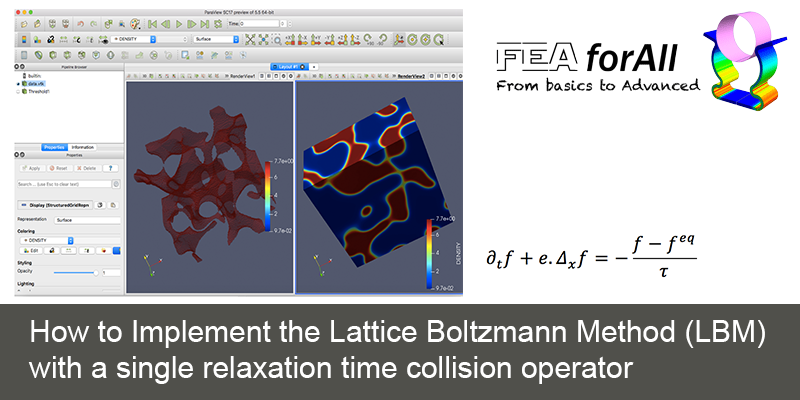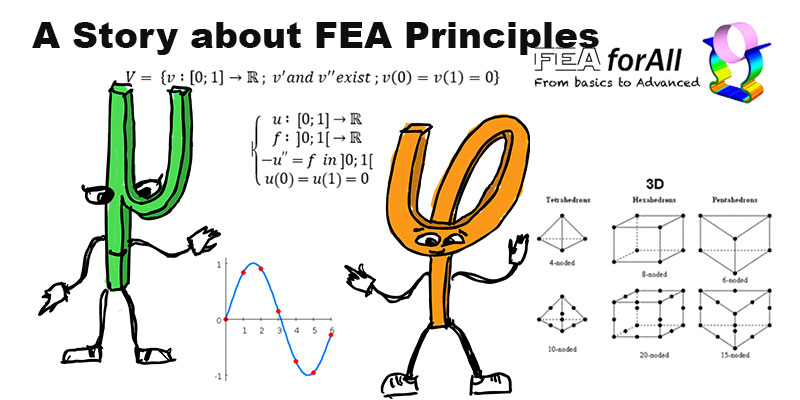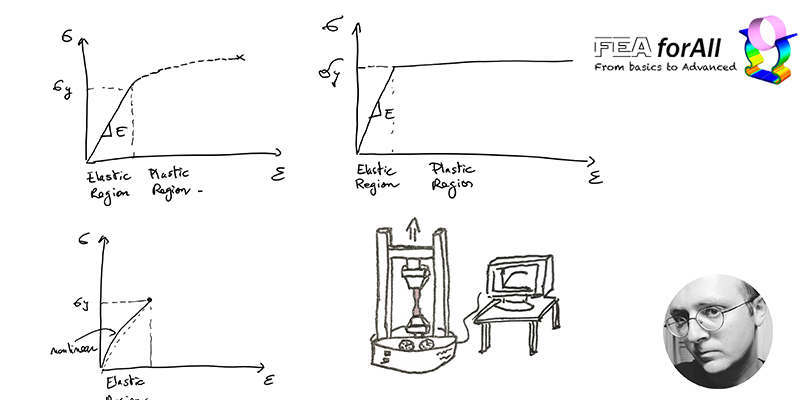This article complements and enhance the first article published on the blog about the LBM Method: Everything you need to know about the Lattice Boltzmann Method Today, the article will focus on the practical implementation of this method! I leave the place now to the author of the article, my friend and engineer Nicolas Maquignon.Implementation of […]
[Salome Paravis Tutorial] Changing the Color Map
The color map… For those who already know me and read my articles since a long time, you know probably all the good I think about engineers focusing ONLY on colors… If you don’t know what I am talking about, read this article: From stress color painting to real FEA So…Why am I talking about […]
[Code_Aster Tutorial] Simulating a 2D shell Beam in Salome-Meca
In this tutorial, we will look into simulating a 2D shell beam in Salome-Meca. What you will learn here: – How to Create a 2D beam model – How to set correctly Code_Aster for simulating 2D shell – How to post process results and get stress on the thickness If you want to know how […]
A Story about FEA principles
When you work with FEA for a long time, it’s only natural to wonder about the initial physical principles behind the software we use every day… It’s nice to have a graphical interface with buttons, ways to draw and make calculations… but where does all of that comes from and what are the physical equations used […]
[Salome Video Tutorial] Automating Geometry Creation with Python
This week I am going into one of the most interesting aspects of using open-source FEA, the fact that you can automate fully geometry and mesh creation using Python! Yes, by automating, I mean that you can create a script and let it make all the hard work to create your geometry model from zero. […]
How to define a nonlinear material in FEA?
In this article, I will tell you the very basics you need to understand to start using nonlinear material models in your FEA simulation. If you are just starting FEA, you may have learned that defining “Material Data” usually meant providing 2 input values into your FEA software: The Young’s Modulus The poisson’s ratio And […]
- « Previous Page
- 1
- …
- 13
- 14
- 15
- 16
- 17
- …
- 32
- Next Page »

![[Salome Paravis Tutorial] Changing the Color Map](https://feaforall.com/wp-content/uploads/2018/06/color-map-1024x576.jpg)
![[Code_Aster Tutorial] Simulating a 2D shell Beam in Salome-Meca](https://feaforall.com/wp-content/uploads/2018/06/2d-shell-beam-1024x576.jpg)

![[Salome Video Tutorial] Automating Geometry Creation with Python](https://feaforall.com/wp-content/uploads/2018/05/Automating-with-Python-Salome-thumbnail-1024x576.jpg)
